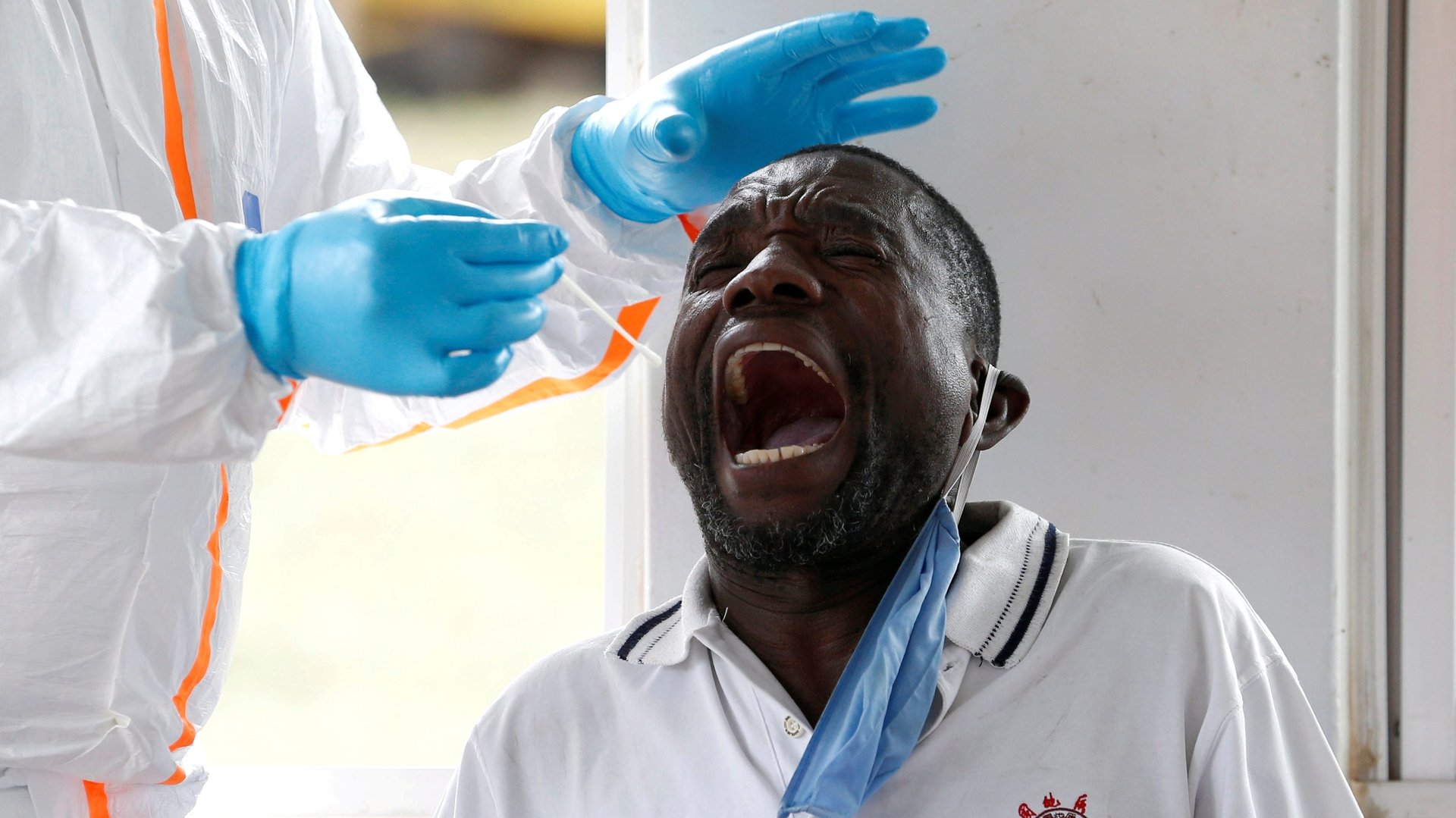The pandemic’s spread across Africa is being tempered by a young population, for now
Since the onset of the Covid-19 pandemic, Africa has seen lower numbers of cases and death compared with other continents, on a “per million” basis.


Since the onset of the Covid-19 pandemic, Africa has seen lower numbers of cases and death compared with other continents, on a “per million” basis.
But the numbers have been on a steady rise and in recent weeks there’s been a spike as the continent crosses the 500,000-mark. It took about 100 days for cases to reach 100,000 in the continent, about 20 days each to reach 200,000 and doubled 400,000, and only a week to reach 500,000 cases.
As of July 8, there were 524,000 cases, 12,229 deaths and 225,000 recoveries from Covid-19 on the continent, according to the Africa Centres for Disease Control.
Reuters analysis on July 7 showed just over 4,200 tests per 1 million across Africa, compared to averages of 7,650 in Asia and 74,255 in Europe. But South Africa also dominates testing on the continent with nearly 2 million tests. South Africa has the most cases with over 225,000 cases and 3,600 deaths. In western Africa, Ghana has had more than 300,000 tests, 23,000 cases and 129 deaths.
This rising number of cases is not deterring African countries from opening up their economies. With limited resources to buffer the cost of an extended locked down and a declining economy, African governments are faced with a pressing need to restore economic activities while at the same time reducing the spread of the virus.
Findings of Surgo Foundation from a new Africa COVID-19 Community Vulnerability Index (CCVI) posit that Africa’s relatively young population has been the best explanation for the low fatality rate in the continent with projected infection fatality rate (IFR) based on age and gender distribution relatively low in most regions of the continent—between 0.10% and 0.15% compared with 0.66% in the US which has an older population.
Many African countries, particularly in Sub Saharan Africa, have a median age of around 18. The index shows that North African countries and South Africa with a higher median age are more vulnerable when it comes to this factor but that is somewhat offset by positive factors such as better healthcare facilities.
However, the scenarios in many countries and regions across the continent show varying factors such as socio-economic and health impacts of the outbreak. Southern Africa shows more vulnerability due to epidemiological risk factors than western Africa but fragility factors can be found in rich countries and regions as well as poor countries and regions. Wealthier countries such as South Africa and regions such as Lagos, Cape Town or Nairobi with a vulnerable older and denser population are more likely to need hospitalization if the infection spreads. However, most have relatively better access to healthcare, transportation, and housing that reduces fatality and may allow for social distancing and lockdowns to be more feasible.
Contrarily lower income countries such as Ethiopia or poor regions such as Nigeria’s northern regions of Zamfara and Yobe, with poor access to healthcare, find it difficult to practice social distancing being more vulnerable to household crowding and transportation difficulties or stay at home during lockdown without financial assistance.
Across countries, the new index showed Ethiopia as the most vulnerable in Africa despite having fewer deaths per capita among big African populations in Nigeria, South Africa or Kenya. This is due to vulnerability factors such as household crowding, transportation difficulties, poor health system, low socioeconomic status, large internally displaced populations, and food insecurity. South Africa has a high HIV prevalence, an older population, and the highest number of cases and deaths in Africa is one of the most vulnerable countries in the continent but no part of the country is among the 10 most vulnerable regions in the continent.
Sign up to the Quartz Africa Weekly Brief here for news and analysis on African business, tech and innovation in your inbox